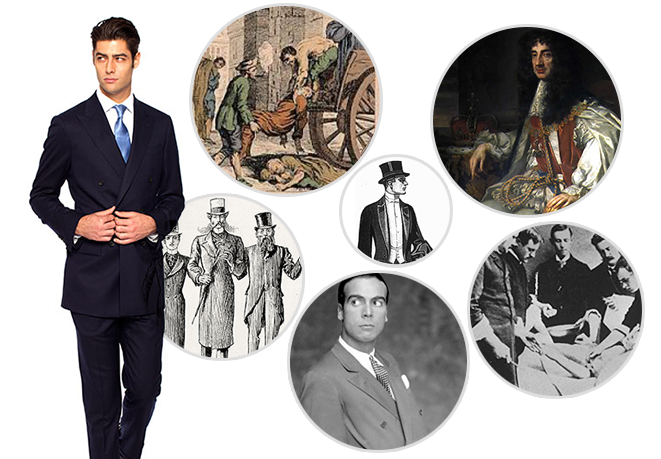Do you know what the Great Plague of London had to do with the modern men’s suit?
In 1665 the Great Plague of London killed an estimated 100,000 people (about 15% of the population). The Great Plague of London was the last major epidemic of the bubonic plague that had swept through Europe in the 14th century and left around 25 million dead.
In its somber aftermath, England’s monarch Charles II ordered his court to drop the frilly lace and elaborate costumes in vogue at the time for more toned down tunics and breeches. This, some say, represented the shift in aristocratic clothing that would eventually evolve into the modern day business suit.
Over the course of the next few hundred years, the forerunner to today’s men’s suit underwent a series of transformations. In the 18th century, the English upper classes introduced the finely tailored morning suit and a while later the very formal evening tuxedo. British tailors also began to adopt aspects of military uniforms for everyday business wear, with the merchant class in London quickly picking up on the trend.
Saville Row tailors dominated men’s suit styles but by the early 19th century the fashion had spread across Europe.
Meanwhile London tailors continued to experiment. In the 1930s, tailor Frederick Scholte introduced a suit with extra fabric in the shoulder and armscye, a slightly nipped waist and fuller, tapered sleeves. This allowed the suit jacket to remain in place at the top but provided the wearer with greater arm movement.
Known as the ‘London Cut’, Scholte’s innovation served as the precursor to the modern day, slim fitting men’s suit with suppressed waist which is widely popular today.
Get the best of English tailoring traditions in the Madison Navy Flannel Suit. Ask for double breasted to reflect the military influence and slim fit for the perfect modern silhouette.

